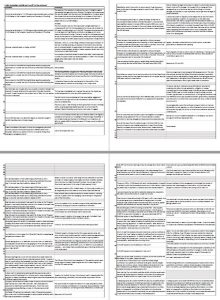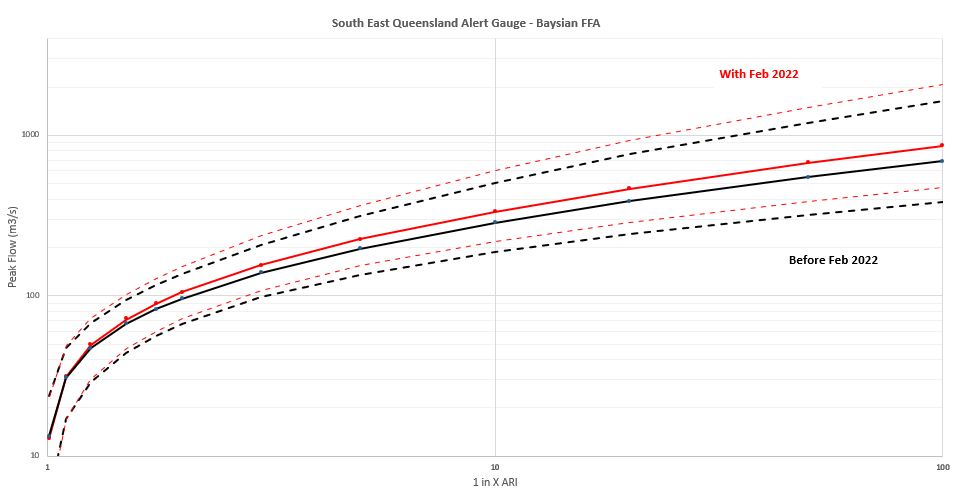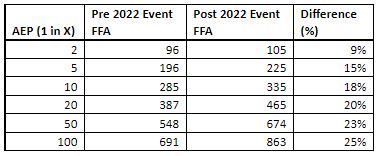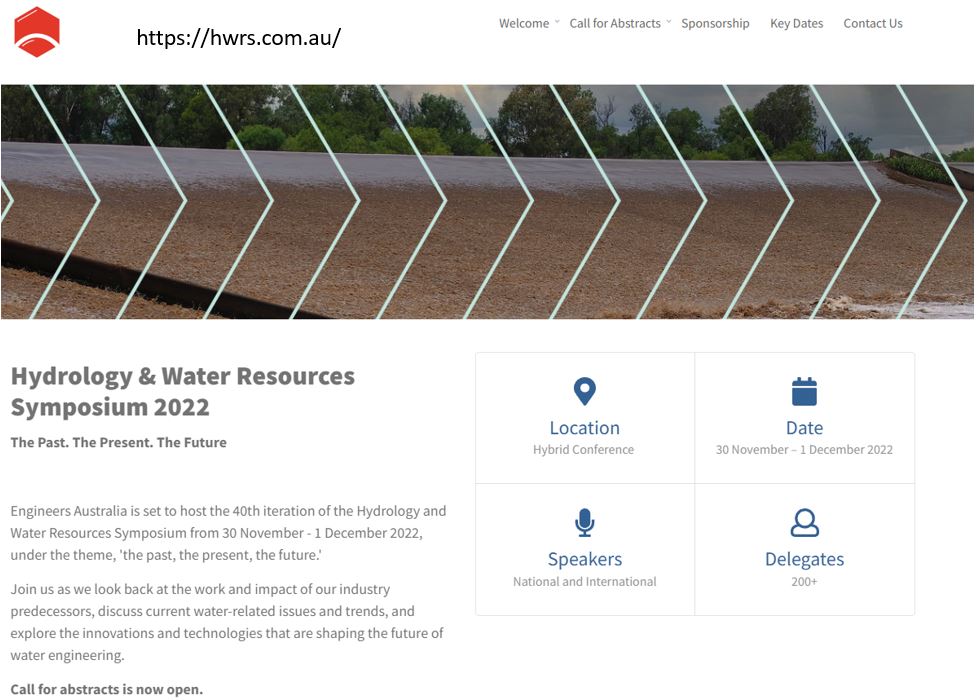Australia’s 2022 extreme rainfall and runoff
In February and March 2022, some areas of Australia experienced the highest rainfall and runoff on record. In response to these extreme events, the Australian Water School and Floodplain Management Australia convened a special panel discussion with industry experts to address some of the implications of these events on future flood modelling, management, and mitigation practices. View the recording of the panel event here:
Click here for background on our panellists and for the Q&A transcript with responses to over 200 questions raised by attendees during the panel event.
The event was held online with over 2,000 registrants from almost 100 countries. This panel event differs from typical AWS webinars in that it was entirely a Q&A session with no formal presentation. As in a live conference setting where panelists sit at a table while audience members approach the microphone, this discussion was guided by audience members approaching the virtual “microphone” through the Q&A line.
Please send any feedback regarding the format to training@awschool.com.au as your input will help to guide the planning and improve the content of our future events.
This website provides supporting information referenced during the panel discussion.
Impacts
This video from ABC News depicts the catastrophic consequences of the flooding:
This video from 7News coverage of the events conveys the human toll:
Below is footage from several traffic cams showing the overtopping events. These extraordinary scenes highlight why we should avoid crossing flooded roads:
The video clip below shows the spray painted 2022 Lismore peak flood level, which far exceeded all previous historical flood levels:
Here’s another visual reference:

Meteorology
This figure (from weatherzone’s article about the 2022 events) shows the cumulative rainfall in Sydney relative to confidence limits derived from 120 years of data:

[Note that the figure above does not show individual years, some of which would also fall outside of the confidence bands; however, the 2022 curve does indicate substantial deviation from historical values.]
The table below defines a range of precipitation and flood event frequencies based on Australian Rainfall and Runoff guidance, with preferred terminology shown in blue. As shown in the table, the transition from “Very Rare” to “Extreme” events occurs at an Annual Exceedance Probability of 1 in 2,000. The Intensity-Frequency-Duration curves on the right are shown for one of the locations affected by the 2022 events, with the observed precipitation values shown in black. Where the black line plots higher than the 1 in 2,000 AEP line (shown in green), the event is considered by definition to be extreme; thus the title of our webinar: “ARR: to the Extreme!”
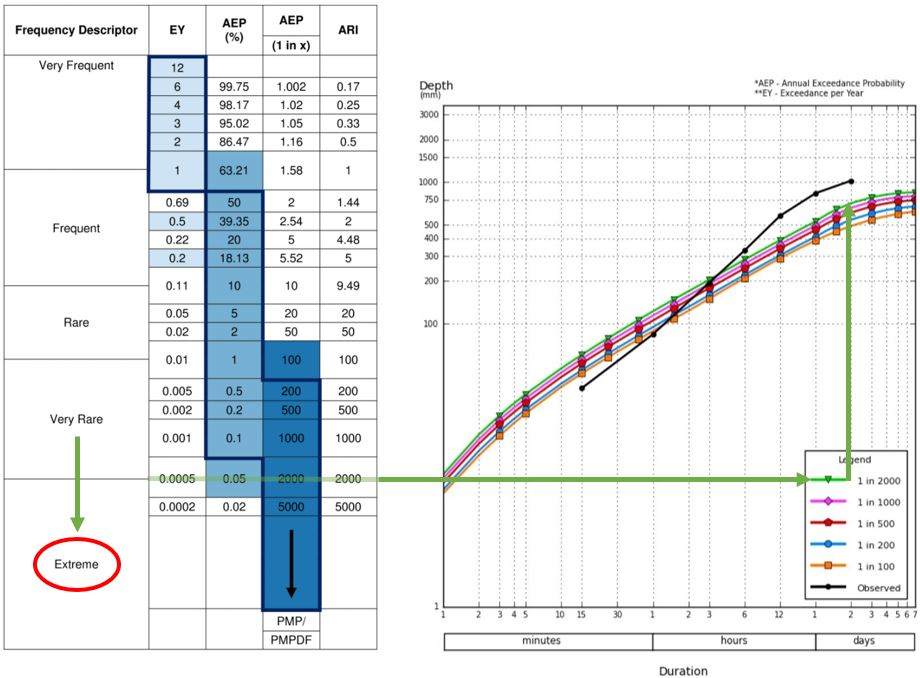
The Australian Bureau of Meteorology publishes “envelope curves” showing the highest recorded rainfall depths by duration worldwide and in Australia. Tables and charts are available on the website “Australia’s Record Rainfall.” Below are some excerpts for NSW and QLD. Note that all Australian records for durations of 24 hours and above are from a single rainfall gauge at the top of Mount Bellenden Ker (circled in the chart below). These rainfall depths have been called into question due to the localised conditions around the gauge. Read more about the Bellenden Ker gauge readings in this ABC news article, “It can be Freaky!”
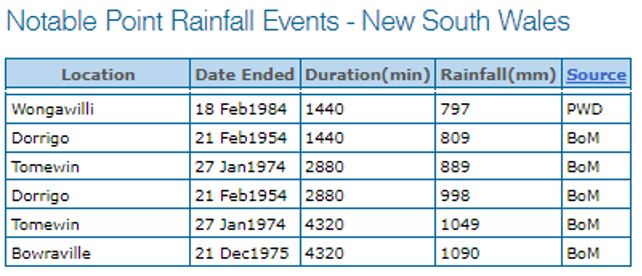
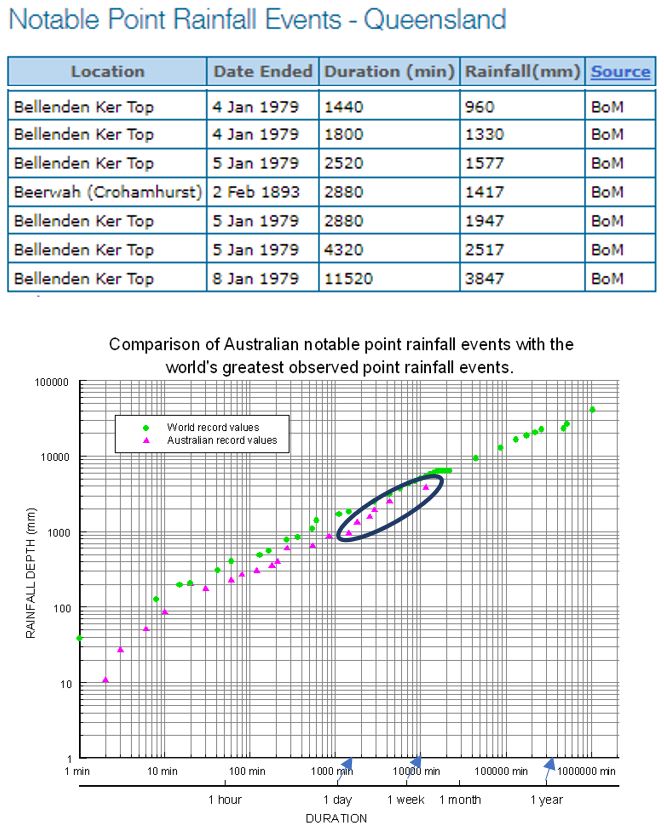
Intensity-Frequency-Duration
The BoM IFD website allows observed rainfall data to be plotted against localised predictions. Below is an animation showing the observed 2022 rainfall and IFD data plotted against the Australian and worldwide records. For this particular site, the 2022 events – while extreme – do not exceed the Australian or worldwide records:
Here is one gauge that shows shorter-duration rainfall exceeding both the Australian and worldwide rainfall records for the 2022 events. These are preliminary readings that have not yet been validated through the standard QA/QC process. The deviation of the short-duration readings from other, nearby gauges indicates potential mechanical issues with the gauge. This is not uncommon in extreme events, and all readings should be interpreted cautiously. For longer durations, the observed data align with other nearby gauges.
Impact of 2022 events on future FFA and IFD analyses
The figures below (discussed by James Weidman during the panel session) show pre-2022 flood frequency analyses against re-assessed flood frequency analyses that incorporate the 2022 events. Note that while there has been an upward shift, the revised values still fall within the earlier confidence bands (as discussed here during the webinar).
Panellist Mark Babister provided the following comparison of Lismore flood stages during the 2017 flooding and the 2022 flooding:
Did eastern Australia’s 2022 floods really exceed the 1 in 1,000 event? The following slide packet prepared by Tony Ladson addresses the question.
Climate change impacts
A few weeks before the 2022 east coast flooding, Western Australia recorded its highest temperature ever, matching the Australian record. Western Australia also recorded its second highest rainfall on record in January 2022, the result of a combination of meteorological factors. The correlation between warmer temperatures and greater moisture capacity indicates that climate change may increase the frequency of these events across Australia. View the panel discussion of climate change impacts on the 2022 events here.
Resilience
Flood-resistant building materials and construction techniques can greatly improve public safety and reduce economic damage from flooding. View Suncorp’s “One House to Save Many” documentary below for a discussion about resilience.
Summary
The interactive panel discussion was held within a few weeks of the 2022 events; as such, the assessments presented during the discussion are preliminary and subject to refinement, but we wanted to hold the session while memories of the events are still fresh, the gravity of the situation is being felt, and the implications of getting things wrong are clear.
The purpose of the panel discussion was to spark a dialogue about the issues we are facing in trying to reduce loss of life and economic impacts for future flood events. For the expressed opinions and recommendations to be set into actual practice, we invite all flood practitioners to submit papers for peer review and publication in upcoming conferences, a few of which are highlighted below.
Upcoming courses and conferences
Our upcoming Hydrology and Hydraulics Essentials training course covers fundamental principles of rainfall and runoff. Individual courses include infiltration, flow routing, stochastic hydrology, and flood hazard. View a video summary of course contents below or visit the course registration page for additional details. The courses will be held online in May and June 2022.
The May 2022 Floodplain Management conference in Toowoomba includes a pre-conference ARR workshop that will address the 2022 events. The conference program is available to download here. Click on the image below for registration details:
Abstract submittals are now open for the November 2022 Hydrology and Water Resources Symposium in Brisbane (hybrid online event sponsored by Engineers Australia):
Recognising that by far, most flood-related fatalities in Australia occur in or around vehicles, we also invite you to join us for a 1 June 2022 free webinar dedicated to the dangers or crossing flooded roads. The webinar includes a presentation of design elements that can improve public safety for floodways and low-level crossings. Registration form here:
Related webinars and online on-demand courses
This webinar addresses the definition, derivation, and application of Probable Maximum Precipitation and the Probable Maximum Flood in Australia and worldwide:
This webinar addresses climate change impacts on extreme event hydrology:
This webinar highlights advances in Flood Consequence Assessments, including tracking individual vehicles along evacuation routes against rising floodwaters:
This webinar summarises the 2019 ARR guidance:
This webinar covers Book 1 of the Australian Rainfall and Runoff guidance manual and introduces the on-demand course for the remaining books:
Register here for the 8-part AWS on-demand courses covering ARR methodologies for rainfall-runoff and hydraulic modelling.
Newscasts and articles relevant to the 2022 events
Listen to the 27 March 2022 podcast “Brisbane – City of Floods” discussing the 2022 flood events as well as comparisons to previous flood events. The podcast features Rob Ayre, Margaret Cook, Rory Nathan, and Bill Potts, with topics including dam operations and other factors affecting the flooding:
2016 ARR guidance recommended eliminating the word “year” from all descriptions of precipitation and flood events. The clip below highlights some discrepancies in media descriptions of the events and shows that the recommended terminologies are not being applied; instead, newscasts and articles use terms like “rain bomb”, “unprecedented”, and “Biblical”.
Below are a few of the hundreds of newscasts showing the extent of the flooding along with media descriptions of the event frequencies:
News articles:
- ABC News, 21 March 2022: South-east Queensland’s floods were labelled ‘once-in-100-year’ event, so what does that actually mean?
- The Guardian, 23 March 2022: Climate change spat splits Lismore council in flood aftermath.
- weatherzone, 27 February 2022. 677 mm in three days breaks Brisbane rainfall record.
- The Guardian, 28 February 2022. What caused the ‘rain bomb’? How the unprecedented Queensland and NSW 2022 floods unfolded.
- See 44 additional cited newspaper articles in the reference section here
How can I help?
- The 2022 flood events have created ongoing needs for humanitarian assistance. State Emergency Services personnel continue to assist flood victims.
- Join us next month for our webinar “How can I help“, dedicated to the provision of water-related humanitarian assistance.
- The Queensland government is collecting public submissions for a review of the timing and effectiveness of emergency alerts and the effectiveness of interagency cooperation. Details for submittals are listed here.
- Records of high water marks can help calibrate future modelling efforts. Documentation of high water marks and flow characteristics should be provided to respective councils for future flood estimation purposes.
Please contact us with any queries or to submit additional material related to the 2022 Eastern Australia flood events for inclusion on this page.


